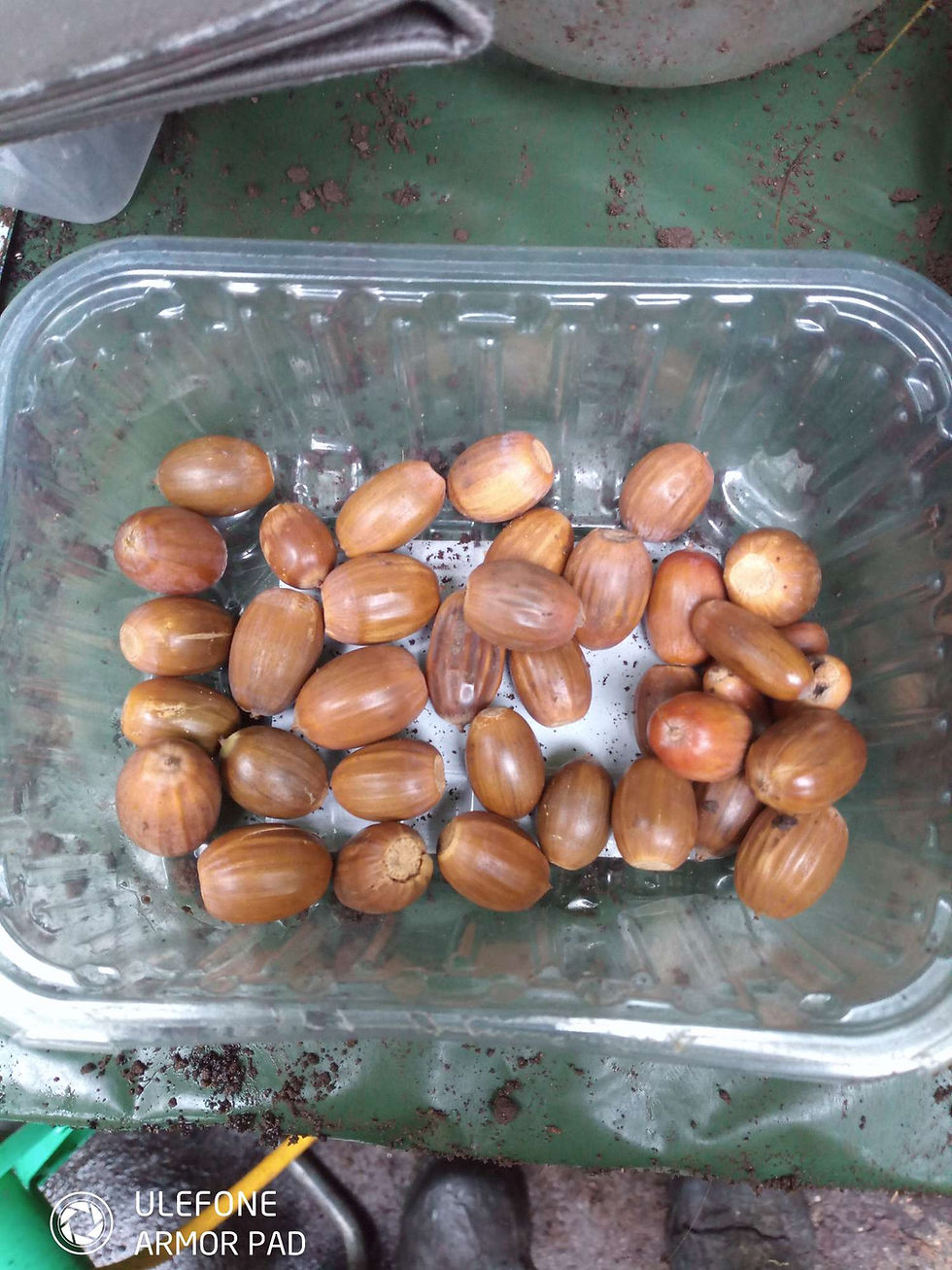
A Time of Transition: Autumn's Arrival and the Life of the Glade
- Anton Foreman
- Oct 3
- 3 min read
The shifting weather clearly marks the acceleration into Autumn. The rain and wind are increasing daily, stripping the trees of their summer growth. The ground is now littered with both wind-blown leaves and a tremendous number of acorns dropping from our majestic oak trees.

At the Glade, our woodland is dominated by the Sessile Oak (Quercus petraea), also sometimes called the Northern Oak. While we do have a scattering of the more common Common or English Oak (Quercus robur), the Sessile variety is the main character here. It's an equally sturdy, imposing, and dramatic tree, instantly recognisable by its slightly lobed leaves and, critically, its sessile (stalkless) acorns.
The sheer volume of acorns hitting the ground this year is remarkable. We were able to gather over 200 of them (thanks, Pearl!), though we made sure to leave plenty for the Jays, squirrels, and other creatures that rely on them to fuel their winter foraging and form their crucial winter caches. We planted our haul in recycled plant plug trays, with the goal of raising Sessile Oak saplings to sell in the future, helping to generate much-needed funds for the Glade's ongoing conservation work.

Beyond the oaks, we have been busy collecting a variety of other seeds from the Glade's flora:

Wild Carrot...

Teasel seed
Fungi erupting like these Beaked Earthstars
Moths too have been limited as Summer, the peak for moth numbers, begin to wain to Autumn.


Moths: A Look at the Late Season Flyers
The peak season for moth numbers in high Summer is now definitively waning as Autumn takes hold. Despite this decline in overall diversity and density, our light traps are still yielding a few late-season beauties for us to record and release. Moths are important nocturnal pollinators and a critical food source for bats and birds.
The caterpillars of the oak trees are especially significant in this ecosystem. Oak trees are absolute havens for insects, supporting more species than any other native tree. This includes the larvae (caterpillars) of numerous moth species which feed on the leaves, making the oaks an essential foundation of the food web. We were delighted to record a few different adult species recently: still a few beauties were extracted from the light traps, to be recorded and released, like the Small Blood-vein Scopola imitaria above......
Left to right...We also found a beautiful Pale Tussock Caterpillar (Calliteara pudibunda). The caterpillars of this species are unmistakable with their bright colouration and hairy tussocks. The adult moths are common in woodland and scrub, and their caterpillars feed on a wide range of trees, including, of course, the ubiquitous oak, as well as birch and willow. The abundance of oak trees ensures a plentiful food source, contributing to a robust moth population within the Glade. Plus a Dark Blade Grass, Red Line Quaker.
Successful Release: The Barn Owl
We recently completed a successful rehabilitation and release of a female Barn Owl (Tyto alba) in the Dales. A member of the public brought the bird to us after finding her starving. Through dedicated care and feeding, we were able to bring her back to a healthy weight.
Before her release, we fitted her with both a colour ring and a BTO ring to allow us to track her movements and contribute data to national conservation efforts. She was successfully released in the vicinity of where she was found. To give her the best chance of survival and future breeding, we installed a nest box in the barn at the release site, using the very same box she used in her rehab pen.




























Comments